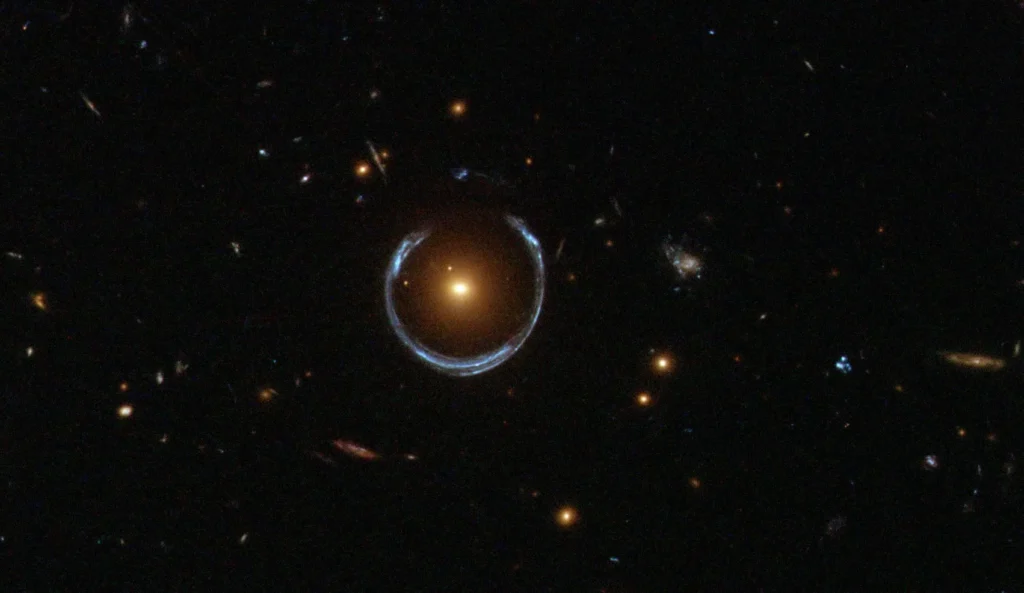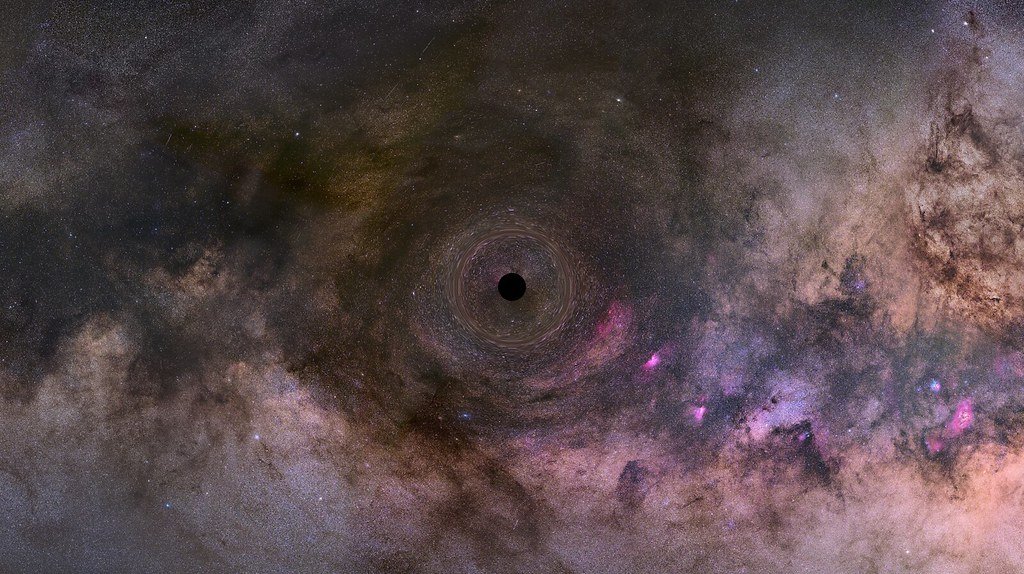For decades, astronomers have speculated about the upper limits of black hole size. Now, a new discovery has brought us closer to that theoretical ceiling. Deep within the galaxy SDSS J1148+1930, also known as the Cosmic Horseshoe, researchers have confirmed the presence of an ultramassive black hole weighing in at 36.3 billion solar masses—nearly brushing against the maximum mass astrophysicists believe such objects can reach. For perspective, the Milky Way’s central black hole, Sagittarius A*, is a modest 4.3 million solar masses, a virtual pebble next to this cosmic colossus.
This black hole is not an active quasar blazing through space. Instead, it sits in a dormant galaxy, revealing its presence not through light, but through its powerful gravitational influence on nearby stars and the bending of light from more distant galaxies. By combining cutting-edge gravitational lensing techniques with detailed stellar motion measurements, astronomers have provided one of the most robust mass estimates for a black hole at this scale.
The Host Galaxy: A Lensing Powerhouse

The Cosmic Horseshoe, located roughly 5 billion light-years away in the constellation Leo, is famous for its striking Einstein ring—an almost complete circle of light created when its immense gravitational field bends and magnifies the light from a more distant background galaxy. This makes it an ideal natural laboratory for measuring mass on galactic scales.
Formally designated SDSS J114833.14+193003.2, the galaxy is a massive early-type system, likely the product of multiple galaxy mergers over billions of years. Such mergers not only build enormous galaxies but also funnel their central black holes together, potentially creating the ultramassive singularity we see today.
“This is among the top 10 most massive black holes ever discovered, and quite possibly the most massive,” stated Professor Thomas Collett of the University of Portsmouth, summarizing both the magnitude and certainty of the result
Measuring the Invisible Giant
Because the black hole is dormant, it produces no bright accretion disk to signal its presence. Instead, astronomers used a dual approach: gravitational lens modeling of the Einstein ring and precise stellar velocity measurements. The radial arc within the lens structure provided direct constraints on the distribution of mass in the galaxy’s core.
Meanwhile, spectroscopic data from the MUSE instrument on the Very Large Telescope (VLT) revealed stars orbiting at speeds approaching 400 km/s near the center. By feeding both datasets into advanced mass models, the team arrived at the figure of 36.3 billion solar masses, with a high degree of confidence—placing this black hole among the largest ever directly measured.
Why This Discovery Matters

This measurement doesn’t just add another data point to the record books—it challenges and refines our understanding of black hole growth. Theoretical models predict that black holes have an upper mass limit of around 50 billion solar masses, beyond which accretion disks become unstable and starve the black hole of further growth. At 36 billion, the Cosmic Horseshoe black hole is already uncomfortably close to that limit.
Its size and dormant state suggest it may have formed through successive galaxy and black hole mergers rather than sustained accretion alone. This makes it an important case study for understanding how ultramassive black holes form in so-called “fossil group” galaxies, where all major companions have merged into one dominant system.
Standing Among Cosmic Heavyweights
Other famous contenders for the “largest black hole” title—such as TON 618 or Holm 15A—have been estimated to be even larger, but those measurements rely on indirect, less precise methods, often based on quasar light or scaling relations. In contrast, the Cosmic Horseshoe’s mass was determined through direct dynamical and lensing observations, making it one of the most reliable figures for a black hole of this magnitude.
This difference is crucial. While indirect estimates can be skewed by uncertainties in the quasar’s environment or assumptions in the scaling models, combining lensing geometry with stellar dynamics provides a far more solid measurement—especially valuable for distant, inactive galaxies.
Opening a New Era in Black Hole Detection
The success of this approach could pave the way for finding and measuring more hidden giants. Gravitational lensing systems are rare, but when combined with high-resolution spectroscopy, they offer a powerful tool for uncovering black holes in otherwise quiet galaxies.
Future surveys, such as those planned with the Vera C. Rubin Observatory and the Nancy Grace Roman Space Telescope, may uncover dozens more suitable lens systems. Each could help clarify whether the Cosmic Horseshoe’s ultramassive black hole is a rare cosmic outlier—or part of a much larger, unseen population shaping the universe from the shadows.
Conclusion
The discovery of a 36.3-billion-solar-mass black hole in the Cosmic Horseshoe galaxy is more than an astronomical headline—it’s a precise, well-verified benchmark that redefines the top end of black hole mass measurements. With techniques that blend nature’s own gravitational optics with advanced spectroscopy, astronomers have not only set a new record but also opened the door to studying the largest and most elusive black holes in the cosmos. The next question is whether this behemoth is a singular giant—or just the first of many we have yet to find.

Hi, I’m Andrew, and I come from India. Experienced content specialist with a passion for writing. My forte includes health and wellness, Travel, Animals, and Nature. A nature nomad, I am obsessed with mountains and love high-altitude trekking. I have been on several Himalayan treks in India including the Everest Base Camp in Nepal, a profound experience.




